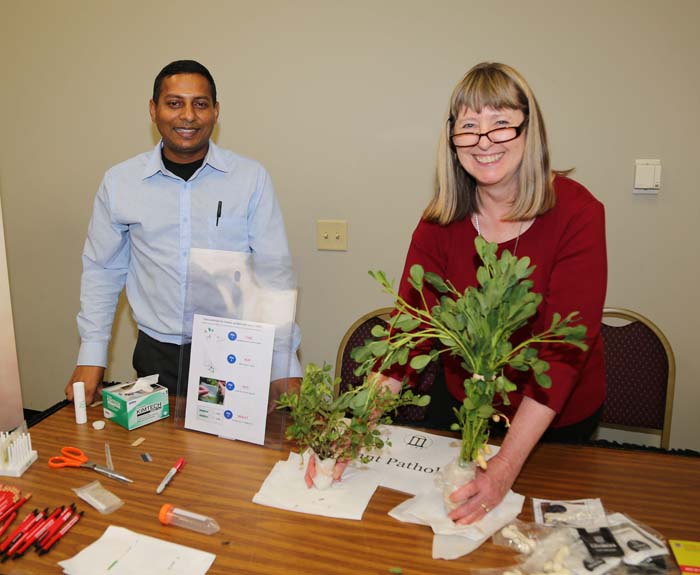UGA-Tifton plant pathologists key to helping Georgia farmers fight diseases
Published 4:00 pm Friday, November 16, 2018

- Emran Ali and Katherine Stevenson, right, from the Plant Pathology Department at UGA-Tifton.
TIFTON — The University of Georgia’s Department of Plant Pathology is a leader in diagnosing plant diseases and developing viable management solutions for farmers worldwide.
“It’s never the same from day to day,” said UGA plant pathologist Katherine Stevenson, who serves as the coordinator of research, Extension and instruction on the UGA Tifton campus. “Diseases are popping up all the time. New pathogens appear. Suddenly, we could have a new disease problem that we haven’t had before.”
During the 1990s, tomato spotted wilt virus (TSWV) was that new disease. It significantly damaged peanuts, one of Georgia’s top row crops. TSWV is transmitted by thrips and can impact multiple cropping systems, including vegetables and tobacco. Coming up with a suitable management approach was the plant pathology department’s job — and eventually, its biggest accomplishment.
In a team effort that included UGA entomologists and crop and soil scientists, the plant pathology department created a risk index to help peanut growers understand what their risk level is when dealing with the disease.
“It started out with (TSWV) management, but it expanded a few years ago to include management of all the major diseases, (including) soilborne and foliar diseases of peanut,” Stevenson said. “That’s why it’s called “Peanut Rx.” It’s kind of a prescription disease management program for peanuts. I think that’s been highly successful and one of the things we can be proud of as a department.”
Although Georgia-06G is the predominant peanut produced in Georgia, there are multiple varieties available to producers. With Peanut Rx, growers can compare varieties to see how each fares against different diseases, like TSWV, leaf spot or white mold. Growers can then make informed decisions.
Stevenson and fellow UGA plant pathologist Tim Brenneman also study fungicide resistance, specifically scab disease in pecan. After years of research at UGA-Tifton, Stevenson and Brenneman believe that if farmers use the same chemical product over and over, the scab pathogen will become resistant to the preventive treatment.
“We’ve learned a tremendous amount about how resistance develops, and we have evaluated various control strategies to try to minimize the impact of fungicide resistance,” Stevenson said. “I think that has had a significant impact on the industry.”
In 2014, the two scientists conducted a fungicide sensitivity monitoring program. More than 200 samples of pecan leaves from around the state were tested and the pathologists’ concerns about scab resistance were confirmed.
The department continues to test scab samples for sensitivity to different fungicides to determine which fungicides are still effective.
For more information about the plant pathology department at UGA, visit plantpath.caes.uga.edu/.




